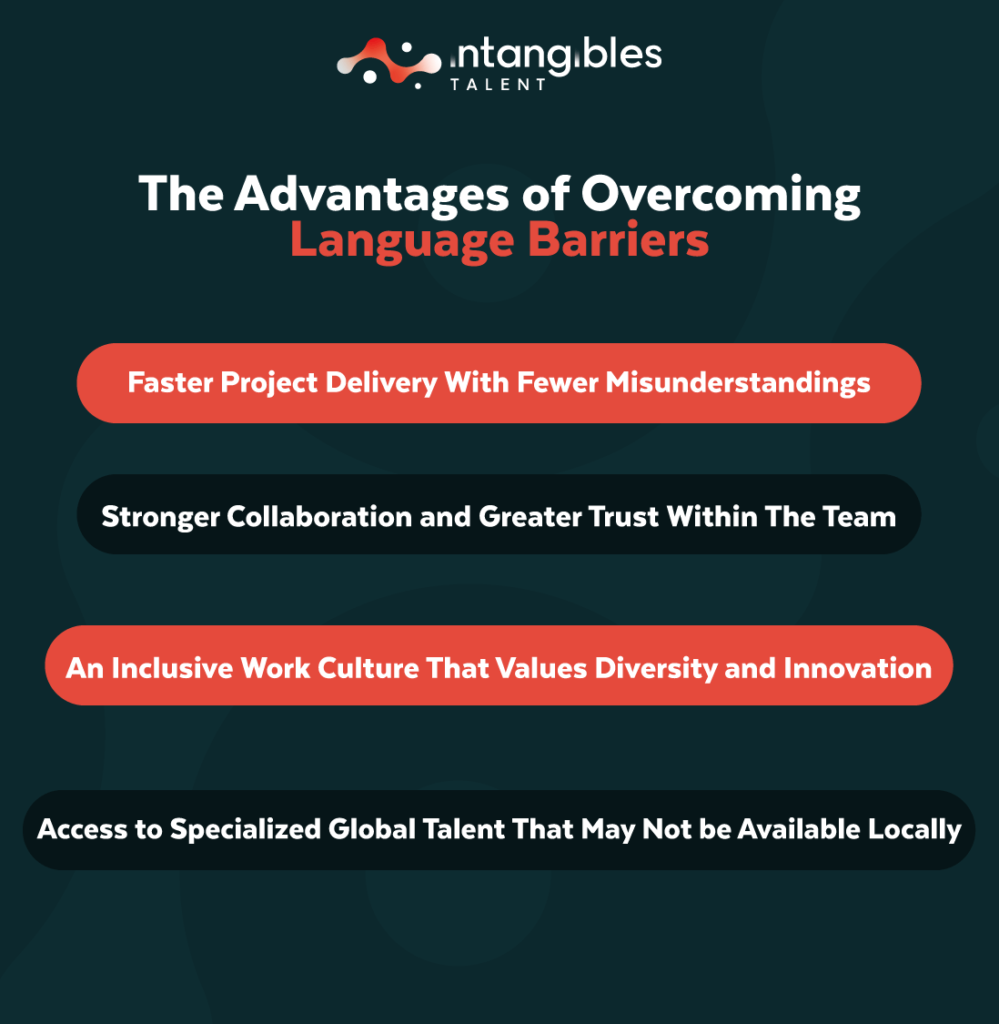In today’s remote world, talent has no borders. For construction companies in the U.S., this means you can access highly qualified professionals without being limited to your local market.
But here’s the challenge: language barriers.
Miscommunication between contractors, project managers, and remote support staff can cost companies more than they realize, delays, rework, hidden costs, and even frustrated clients.
The good news? With the right strategies, language doesn’t have to be a roadblock. It can actually become a strength that sets your company apart.
You might also like: What Is Preconstruction? Complete Guide for Construction Projects
Why Language Barriers Matter in Construction Hiring
Remote teams in construction don’t just exchange emails—they coordinate schedules, budgets, subcontractors, and client expectations. However, when communication breaks down, the ripple effects can be costly.
Key challenges construction leaders face:
- Miscommunication on projects → incorrect takeoffs, design errors, or delays.
- Inefficient processes → teams working harder, not smarter.
- Disconnected culture → remote staff feel isolated, reducing engagement.
- Hidden costs → mistakes that eat into profit margins.
- Leadership gaps → supervisors unprepared to manage cross-cultural, remote teams.
Strategies for overcoming language barriers
The good news is that language barriers are not insurmountable. With a proactive approach, companies can ensure smooth collaboration across borders.
Some of the strategies we practice at Intangibles Talent:
1. Establish a common business language
Most global teams use English as the standard. Clearly define the company’s working language and ensure that expectations are communicated from day one.
2. Invest in language training
Providing employees with access to online courses or language support programs improves communication and builds trust. Additionally, it also demonstrates a commitment to employee development.
3. Leverage technology for communication
Tools such as Slack, Microsoft Teams, and Zoom now include translation features. Finally, AI-powered tools can provide live captions, while platforms like Google Translate help clarify questions quickly.
4. Create clear, visual documentation.
Standard operating procedures (SOPs), diagrams, and visual workflows reduce the risk of misinterpretation. Using simple, concise language in written instructions makes them more accessible to everyone.
The Payoff: Why Tackling Language Barriers Is a Competitive Advantage
Companies that proactively manage communication challenges don’t just save money, they grow stronger.
Benefits include:
- Faster project execution.
- Fewer mistakes and costly delays.
- Stronger relationships between U.S. teams and remote staff.
- A reputation as a company that runs seamlessly across borders.

At Intangibles Talent, we believe language should never hold back your construction projects. With the right systems, tools, and partnerships, you can turn potential obstacles into a strategic advantage.
Ready to overcome language barriers in your team? Let’s talk about how we can help you build remote construction support that works as smoothly as your on-site crew.
Learn more about why U.S. Firms Hire Project Managers from Mexico